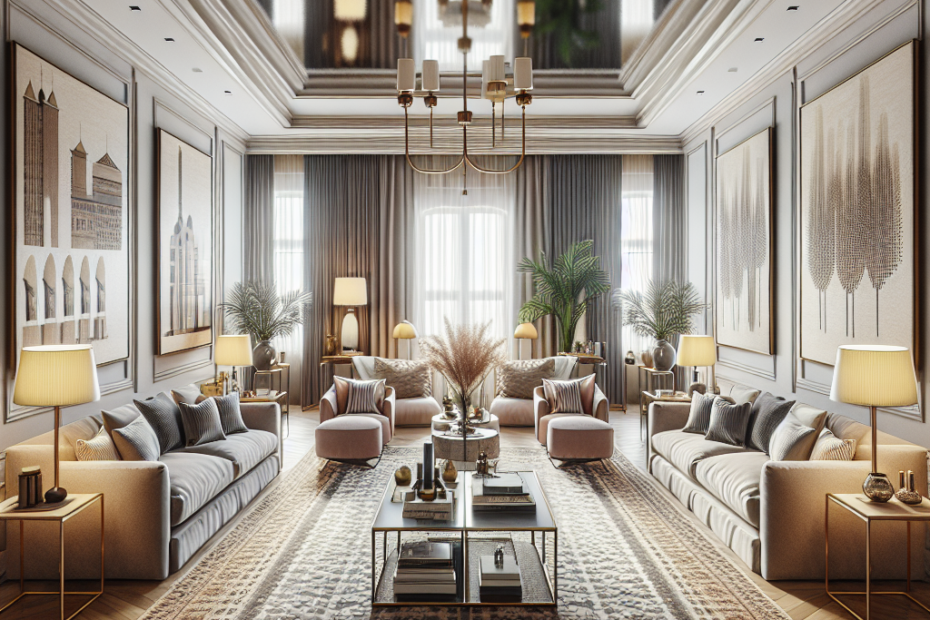Creating Balance with Symmetry in Furniture Arrangement
Their living room seems like it needs something special. They want it to feel calming and balanced, but they aren’t sure where to start. Perhaps, symmetry in furniture design may be the answer? Many homeowners are turning towards symmetry to create harmonious and aesthetically pleasing spaces.
Understanding Symmetry in Furniture Design
Symmetry in furniture design refers to arranging items in a room so that both sides are mirror images of each other. Whether it’s two identical sofas facing each other, matching side tables on either side of the bed, or perfectly placed wall art, symmetry creates a sense of balance and order.
Benefits of Symmetrical Furniture Arrangement
- Visual Balance: Symmetry makes spaces look more orderly and balanced, which can make rooms appear larger and more inviting.
- Ease of Decorating: Matching pieces make it simpler to decorate as the symmetry guides the arrangement.
- Pleasing Aesthetics: Many people find symmetrically arranged rooms more beautiful and calming.
How to Achieve Symmetry
Achieving symmetry in furniture design doesn’t have to be complicated. Here are some effective strategies:
- Start with a Centerpiece: Place a focal point, such as a coffee table or a mantle, and build around it.
- Pair Furniture: Use matching sofas, chairs, or tables on either side of the centerpiece to create balance.
- Coordinate Accessories: Symmetry isn’t only for furniture; mirrors, lamps, and art can also be arranged in pairs.
Example Layouts
Here are two examples of symmetrical layouts:
| Room | Symmetrical Layout Example |
|---|---|
| Living Room | Two sofas facing each other with a coffee table in the middle, matching lamps on either side. |
| Bedroom | Bed in the center, identical nightstands with matching lamps on both sides. |
Symmetry in Different Spaces
Symmetry can work in various spaces, and their function shapes how it is best applied.
Living Room
In the living room, they might use symmetrical arrangements to foster conversation. Facing chairs or sofas encourage people to talk and interact.
Bedroom
In the bedroom, symmetry around the bed creates a serene environment, conducive to relaxation and sleep.
Dining Room
They can also use symmetry in the dining room. Placing identical chairs evenly around a central table creates an inviting look.
Home Office
Even a home office benefits from symmetry. A symmetrical setup with balanced bookshelves and desks helps create a focused and organized workspace.
The Impact of Symmetry
Studies show that people are more likely to feel comfortable and relaxed in symmetrical environments. According to research conducted by the University of California, the human brain prefers symmetrical layouts because they are easier to process visually (source: University of California, 2020). This can lead to increased satisfaction and comfort within the space.
Key Takeaways
- Symmetry in furniture design involves arranging items to mirror one another.
- It creates visual balance, simplifies decorating, and enhances room aesthetics.
- Effective strategies include starting with a centerpiece and pairing furniture.
- Symmetry can be applied in living rooms, bedrooms, dining rooms, and home offices.
- Research indicates people feel more comfortable in symmetrical spaces.
FAQs
- Q: What is symmetry in furniture design?
A: Symmetry in furniture design is arranging items in a room so the sides mirror each other, creating balance and order.
- Q: Why is symmetry important in interior design?
A: Symmetry is important because it makes spaces look balanced, orderly, and aesthetically pleasing.
- Q: How can they create symmetry in a small living room?
A: They can create symmetry by using matching furniture and accessories on either side of a central piece, like a coffee table.
- Q: Can they achieve symmetry with different styles of furniture?
A: Yes, they can achieve symmetry by balancing furniture and accessories, even if they have different styles.
- Q: Are there any drawbacks to symmetrical design?
A: Some might find symmetrical design too rigid or predictable, preferring a more eclectic and varied arrangement.
